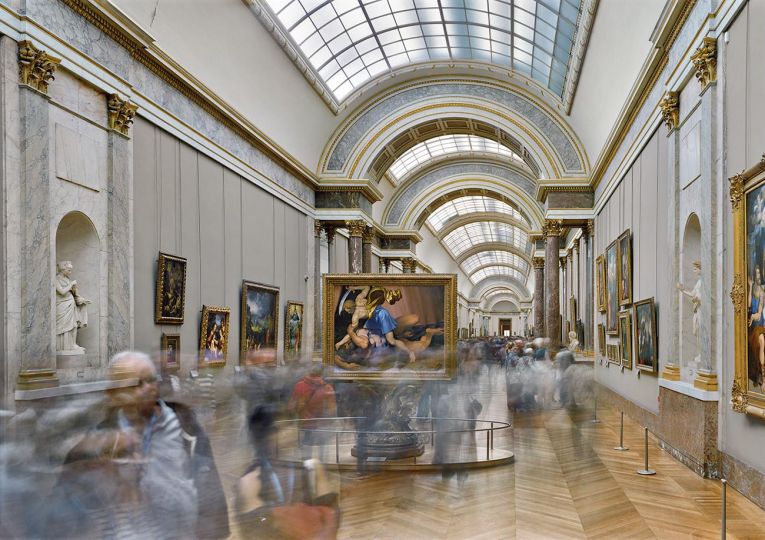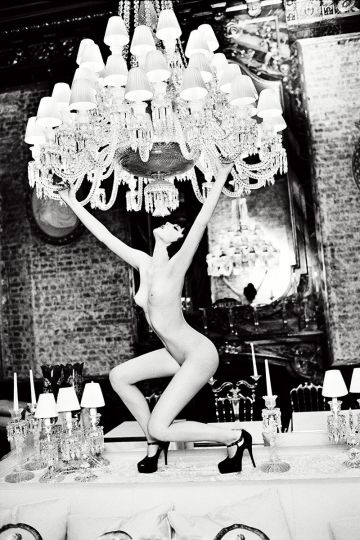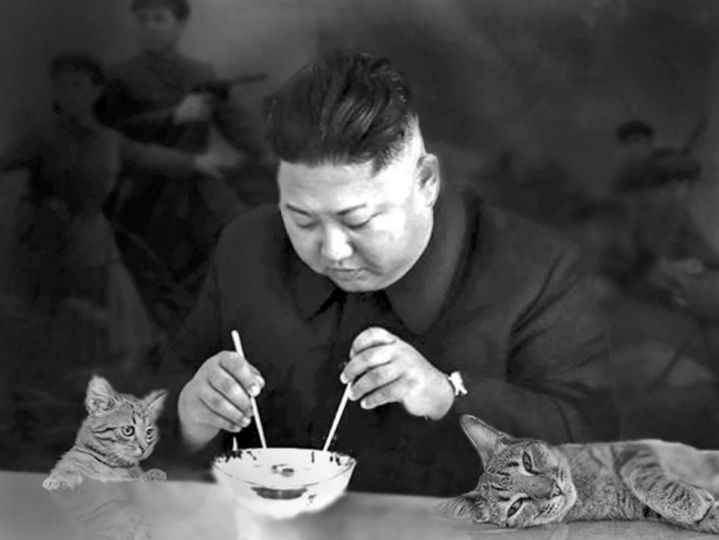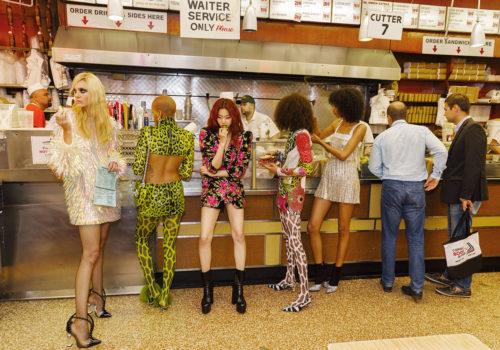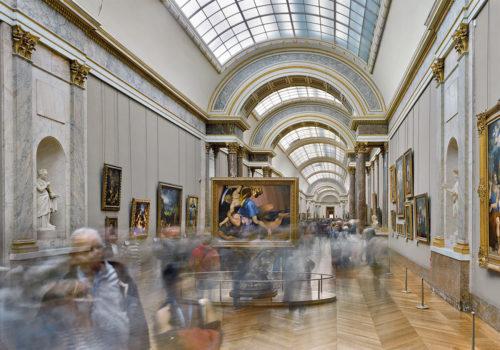In the tradition of Super Models (2015), All Star (2016), and Painted Ladies (2017), this new series of photographs, created in 2018, features young women posing “like actresses embodying imaginary characters”. Its title is directly borrowed from the vocabulary of the film industry of the 1950s. Originally, a “China Girl” designated the anonymous actress holding the cameraman’s gray chart which was used to calibrate the first image that was inserted in the beginning of a film to make copies. By extension, a “China Girl” became the generic term for distinguishing this first image.
This accessory role assigned to actresses engendered a stereotype pose that Valérie Belin subtly reinterprets in her portraits. They feature three young women with strange aesthetic similarities to such an extent that it is difficult to differentiate them among each of the photographs that make up the series. Like contemporary geishas, they embody, according to the artist, “the role of a beautiful captive, living in a wonderful environment”. Elegantly dressed, they pose kneeling in the center of a decor abounding with motives and junk objects (quirks, fake antiques, vases and bowls filled with flowers and fruits, etc.). The porcelains used (china in English) inspired the title of each of the works: Bohemian Glass Cup, Opaline Crystal Flask, or Swan Neck Vase.
The phantasmagorical atmosphere that emanates from Valérie Belin’s works is in keeping with the exuberance of their decor, saturated with details as in a Baroque still life. The comparison was already relevant in the series Still Life (2014) which summoned, in its own way, the painting of the Dutch Golden Age to reproduce this same extreme density of images. It reaches here its paroxysm in the funds that juxtapose extracts of American Comics Strips boards to other ornaments, floral for example. The superimposition of the motifs, with a refined pictorial rendering, consists of lush landscapes that play a role analogous to that of the imaginary landscapes that can be seen in the background of the portraits punctuating the history of ancient painting. Vinci to Joshua Reynolds. If these landscape funds had primarily a decorative purpose, from the eighteenth century, they also had the function of reflecting the psychology of the model, exactly as Valérie Belin does today with her China Girls. Thanks to the techniques of matte painting and superimposition, the artist manages to confuse the plans and to create the illusion of a setting both material and sensory where each element contributes to the psychological tension of the entire photographic series, itself conceived as a “mental landscape” in which the China Girls would be trapped. These strange geishas, ”to the delicacy of a flower and to the strength and flexibility of a willow” (according to the Japanese definition), are as transposed from a dream to the allegorical decor imagined by the artist.
By confronting in her compositions the backgrounds and the many details, Valérie Belin accentuates the general dramaturgy of the series and gradually brings the viewer to an uncertain disorder. The mysterious, almost unreal climate that emanates from each image is not unlike that of Blow-Up [Michelangelo Antonioni, 1960], and more particularly this key sequence of the film where the enlargement of a photograph reveals, in background, the traces of a murder which one ends up wondering if it really existed. In the game of cinematographic references, Valérie Belin also recalls the memory of the famous scene of the film Vertigo [Alfred Hitchcock, 1958], where the fate of the protagonist will join that of his ancestor “through a painting” – and more precisely “By the attention paid to the details of this painting” (the undulations of the hairstyle, the motifs of the dress, the jewel worn on the chest, the bouquet of flowers placed on the bench …). We find in China Girls this deep concern for detail and the same evocative power of images. Objects take on a destabilizing fetishistic dimension. In 2003, Valérie Belin already questioned the role of the image with its famous series Mannequins. This questioning remains in the series China Girls where the models, although alive, seem frozen “like porcelain dolls”. Light contributes to this artifice by shading the bodies and, more particularly, the faces.
1 Film editing technique frequently used in fantasy and sci-fi films from the 1930s. Matte painting consists of painting on a flat surface a trompe-l’œil decoration around an empty space to house the actors. It offered more flexibility on film sets by allowing filmmakers to give free rein to their imagination and creativity.
These are as if they were inhabited by an impenetrable gaze which, according to the artist, seems “as absorbed by a kind of out-of-field, interior and exterior”.
Altogether, there are no stars in the eyes of Valérie Belin’s China Girls, but rather a glimmer of eternity just like their condition of “beautiful captives”. Their suspended gaze, willingly melancholy, fuels, like other elements of the decor, the feeling of suspense sublimated in each scene imagined by the artist. Together, they draw a “mental landscape” exacerbated by the refinement of staging and the dramatic use of chiaroscuro. This art of dissimulation and travesty is the hallmark of the works of Valérie Belin who, for more than twenty years, continues to explore, between dream and truth, between fantasy and reality, the field of possible representations of animate and inanimate beings.
Valérie Belin, China Girls
November 15, 2018 – December 22, 2018
Nathalie Obadia Gallery
8, rue Charles Decoster
1050 Brussels
https://www.nathalieobadia.com/exhibitions.php



